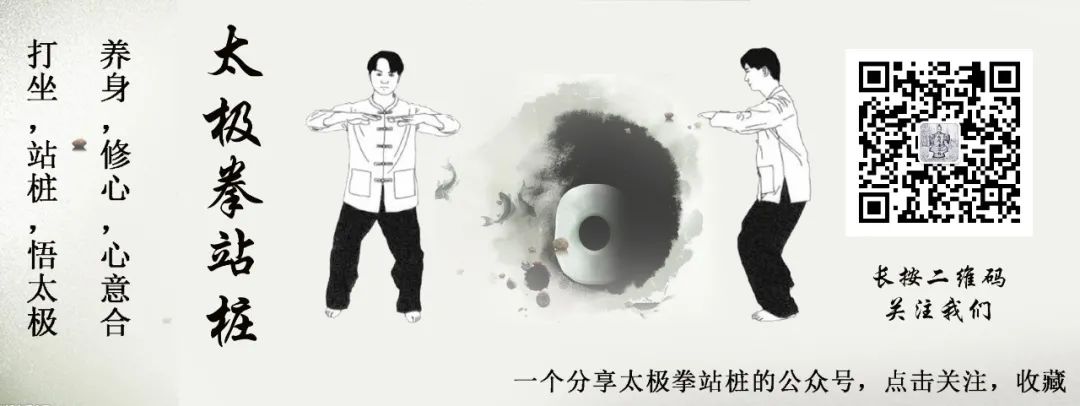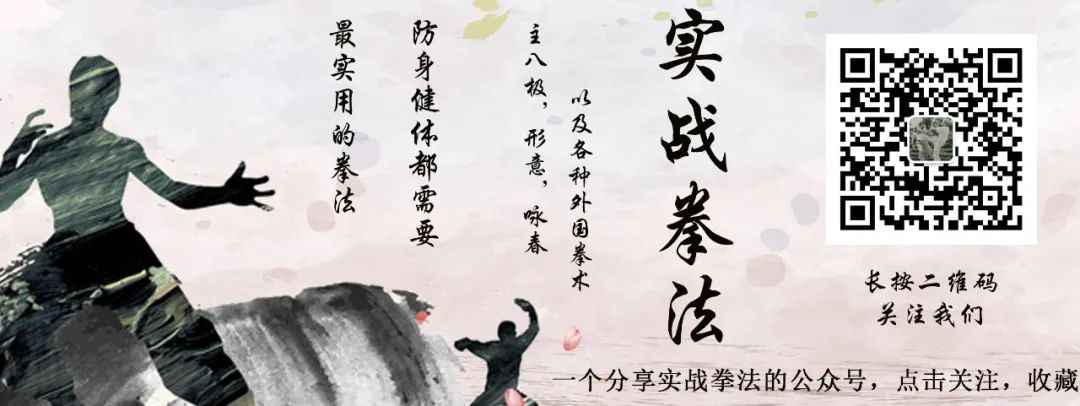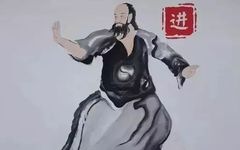Tai Chi Chuan is the world’s largest martial art. It represents the quintessence of Chinese martial arts and serves as a carrier and symbol of traditional Chinese culture. It is a discipline that interprets and expresses traditional Chinese philosophy through the body.
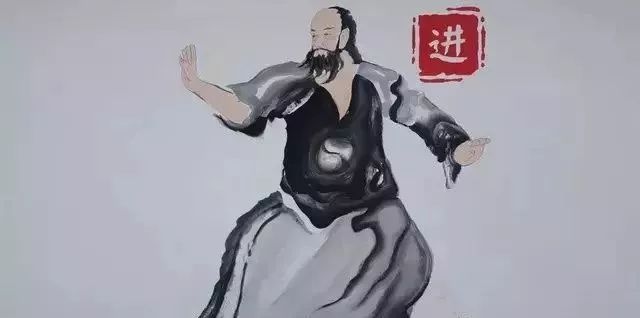
The essence that distinguishes martial arts from other disciplines is its function of overcoming enemies and self-defense. Every martial art is derived from practical combat, and Tai Chi Chuan is no exception.
Generally, people believe that in a conflict, victory comes from strength, meaning that the strong defeat the weak; or from speed, meaning that the fast defeat the slow.
However, Chinese martial arts emphasize skillful victory and intelligent victory. This does not mean that strength and speed are not important, but rather that they emphasize the control of strength and speed throughout the process to achieve the maximum effect of defeating the enemy while protecting oneself.
In warfare, knowing oneself and knowing the enemy is crucial to avoid defeat. The essence of Tai Chi Chuan fully embodies the skill of knowing oneself and knowing the enemy. Through internal cultivation within certain rules, one achieves self-awareness, which in turn allows for the ability to understand the opponent.
Typically, what we see in Tai Chi Chuan is slow and soft, leading many to mistakenly believe that the characteristics of Tai Chi Chuan are “slow” and “soft and powerless,” which is a misunderstanding and a bias.
In reality, true Tai Chi Chuan possesses immense power and is unstoppable; its speed is like lightning, striking instantly. The reason it appears “slow” is due to its emphasis on the continuous control of strength and the interplay of forces, aiming for precise combat effectiveness. The “softness” refers to the concealment and storage of strength, which manifests as a subtle readiness to respond effectively.
So, what is the true nature of Tai Chi Chuan? There are few masters, and those who have the fortune to witness it are even rarer. Is Tai Chi Chuan truly good? If so, why are there so few masters, and why does it take so long to develop skills? Is it really a matter of “not stepping out for ten years”? If so, where does its advantage lie?
“Only what is useful has value.” Compared to others, only those that are highly useful and effective quickly can be considered truly advanced and advantageous; otherwise, they are backward and should be eliminated. If Tai Chi Chuan is to be considered good, it must excel in overcoming enemies and achieving victory over other martial arts; practicing it correctly should lead to rapid progress without excessive hardship or pain, naturally achieving extraordinary martial skills in a relatively short time, allowing one to defeat enemies effortlessly, and as time goes on, one’s skills can increase with age, becoming stronger. Is this possible? Yes! Because Tai Chi Chuan is true skill, true knowledge, and advanced culture.
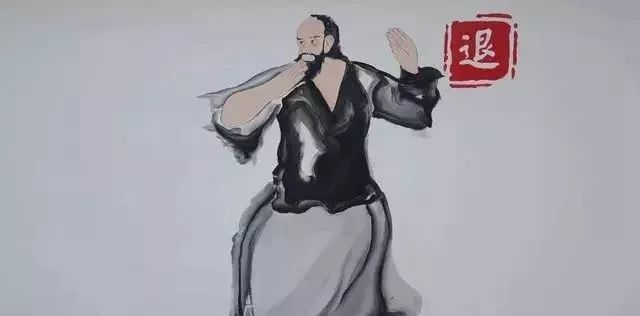
Yin-Yang Theory – The Chinese Style of Relativity
The core of traditional Chinese culture is the theory of Yin-Yang and the Five Elements (Wu Xing), and the theory of Bagua (I Ching) itself is based on Yin-Yang theory, encompassing everything and explaining their internal connections. The Yin-Yang theory and the Five Elements theory each form their own systems but can also be compatible with each other. The three major internal martial arts of China are based on the theories of Yin-Yang, Five Elements, and Bagua respectively. The theory of Tai Chi Chuan primarily utilizes Yin-Yang theory, while Xing Yi Chuan mainly employs the Five Elements theory, and Ba Gua Zhang primarily uses Bagua theory.
When discussing Tai Chi Chuan, one cannot overlook the Yin-Yang theory.Yin-Yang theory includes several concepts:
1. Yin and Yang can be divided, one becomes two, and this can continue infinitely.
2. Yin and Yang are interdependent; pure Yang does not generate, and pure Yin does not thrive; Yin is the body of Yang, and Yang is the function of Yin.
3. Yin and Yang can transform; extreme Yin generates Yang, and extreme Yang generates Yin, with mutual consumption and cyclical recurrence, like an endless loop.
The Yin-Yang theory essentially describes several philosophical issues: the unity of contradictions, the view of universal connections, the relationship between matter and consciousness (function), and the view of the movement of things. Enhancing understanding of the various perspectives of Yin-Yang will aid in the correct appreciation of Tai Chi Chuan.
To grasp the mysteries of Tai Chi Chuan, one must first decode its secrets, namely the general principles and norms of Tai Chi Chuan. Achieving this means obtaining the method, and every movement practiced will embody Tai Chi Chuan; without this method, all forms practiced will merely be Tai Chi exercises.
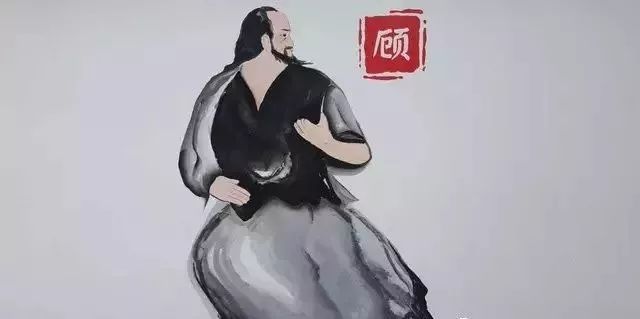
The Tai Chi Code
1. The Basic Code of Tai Chi
1. Three-dimensional support: When standing, the body has three axes, maintaining support and balance in the vertical, front-back, and left-right dimensions. Specifically, the requirements are: vertical suspension (suspending the crown – five toes gripping the ground, with the navel – Mingmen as the center pulling up and down), front-back trigger (sucking in the hips – contracting the buttocks, causing the pelvis to rotate and tighten under muscle tension, forming a spring trigger), and left-right resistance (locking the knees – rounding the crotch, with the femur internally rotating to form an inward knee, while the upper femoral head pushes outward to round the crotch). Thus, the body possesses the controlling force of contradiction and unity in all three dimensions.
2. The three joints of the spine: The human spine has four physiological curves, namely the cervical, thoracic, lumbar, and sacral regions. The cervical, thoracic, and lumbar regions are above the pelvic support. Their function is to buffer the forces from above while also dissipating the forces transmitted from the waist and legs. The requirements are to tuck the chin and lift the neck, round the chest and pull the back, and contract the abdomen and stand tall, so that the spine above the pelvis stands straight, reducing buffering, allowing the forces from the waist and hips to be transmitted directly along the spine, minimizing energy loss.
3. Connection of Ren and Du: The Du Mai (Governing Vessel) starts at the perineum, passes through the anus, and ascends along the spine to the Baihui point, while the Ren Mai (Conception Vessel) starts at the Baihui point and descends through the mouth to the perineum. At the anus and oral cavity, they disconnect, thus requiring the actions of contracting the anal sphincter (anus) and pressing the tongue against the palate to connect the Du Mai and Ren Mai. From a mechanical perspective, these two actions primarily regulate the internal pressure of the abdominal and thoracic cavities for better transmission of force. From a physiological perspective, these actions also regulate the autonomic nervous system and promote glandular secretion.
The above three parts constitute the basic code of Tai Chi Chuan, the general principles and norms that run through all movements of Tai Chi Chuan. This is the key to unlocking the mysteries of Tai Chi Chuan and entering its realm. This is the essence of martial arts, the mother of all styles. Without understanding this profound mystery, practicing Tai Chi Chuan for a lifetime would be in vain.
2. The Upper Limb Movement Code of Tai Chi Chuan:
Relaxed shoulders and dropped elbows are the basic requirements for the upper limb movement in Tai Chi Chuan. To achieve this, the essence lies in the relaxation and abduction of the scapula. This means that as long as the scapula descends and abducts, it naturally results in “relaxed shoulders and dropped elbows.” The basic movements of the scapula are elevation, depression, retraction, and abduction. The so-called force travels through the back refers to the power generated by the large muscle groups of the waist and legs, which travels up the spine to the scapula, and through the supporting role of the scapula (which is in a relaxed and abducted state), is transmitted to the arms and hands. It is required that before exerting force, the arms arrive first, hence the saying, “the secondary joint initiates, the root joint follows.”
3. The Lower Limb Movement Code of Tai Chi Chuan:
Stepping like a cat is the requirement for the lower limb movement in Tai Chi Chuan. To achieve this, the essence is the contraction of the hips and buttocks and the lifting and lowering of the thighs. The so-called root joint initiates (the middle joint bends) while the secondary joint follows; the root of the leg is the waist and hips, the middle joint is the knee, and the secondary joint is the foot. The intention of movement lies in the waist and hips, the initiation of steps is in the thighs, and below the calves should act like “wooden poles,” as if walking on stilts.
The above constitutes the Tai Chi code, which can unlock the mysteries of Tai Chi Chuan.
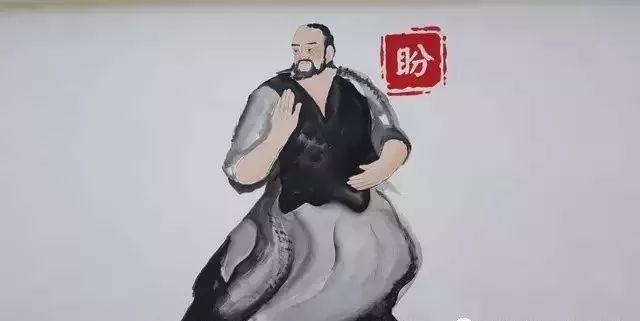
Unlocking Tai Chi Power
1. Unlocking Overall Power:
Tai Chi Chuan emphasizes power from the Dantian, which should be understood as the coordination of the largest muscle groups in the waist, abdomen, hips, and thighs. The power is generated by pushing down and lifting up (pushing the legs to lift the head, with the waist, hips, and knees extending from flexion), which serves as the main force of the body. The force can be released explosively, centered around the navel – Mingmen, with both ends bouncing up and down (the waist being the master, not just a pivot), with the upper part transmitting rigidly along the spine to the crown and the lower part reaching the ground through the calves. This demonstrates the overall, spring-like, explosive power of the body; the force can also be released slowly, centered around the navel – Mingmen, with both ends expanding (the waist being the master), without losing or forcing the energy. Overall power (the main force of the body) exists in all exertions, serving as the origin of all forces.
2. Unlocking Screw Power and Silk Reeling Power:
Screw power refers to the straight force generated during twisting of the waist, spine, legs, and arms. This should be understood as a small range of natural rotation, where the rotation is accompanied by straight force (pushing straight along the main axis) to be meaningful; this force is screw power (like tightening a screw). Similarly, when withdrawing, it is like unscrewing a screw. Regardless of advancing or retreating, the straight force is the main force, while the twisting is the secondary force.
Silk reeling power is slightly more complex, incorporating the actions of wrapping and coiling, transforming from screw power to nut power, but the principle remains the same.
This power must be driven by overall power (the main force of the body) and should not lose the intention of pushing down and lifting up (light and agile, like walking on stilts).
3. Unlocking Force along an Arc:
All force must be released in a straight line, with the overall main force following the axis (waist and spine) upward, while simultaneously rotating around this axis (waist and spine), thus exhibiting force along an arc. Local forces correspondingly cooperate with the overall main force, such as legs and arms, similar to screw and silk reeling.
4. Unlocking the Four Main Forces: Press, Pull, Push, and Twist:
Tai Chi has four main forces: press, pull, push, and twist, which correspond to the eight trigrams and the four cardinal directions (East, South, West, North) as well as the four intercardinal directions (Southeast, Southwest, Northeast, Northwest).
Pressing force is a horizontal force with a straight component; pulling force is directed towards me; pushing force is directed towards the enemy; twisting force is a force directed towards the enemy that is straight yet curved (the elbow appears straight but is not, the wrist appears curved but is not); pulling force is directed outward; pushing force is directed inward; elbow force is a strike with the elbow; and leaning force is a strike with the shoulder.
These eight forces must also be driven by overall power (the main force of the body) and should not lose the intention of pushing down and lifting up (light and agile, like walking on stilts).
5. Unlocking Adhesion, Connection, Following, and Adhering:
Adhesion, connection, following, and adhering are actually descriptions of a state, a process, reflecting the relative state between the enemy and oneself, rather than a specific force. As long as the aforementioned norms are well applied, along with the use of footwork (to be discussed later), the body’s response to force and expression will naturally reflect this state.
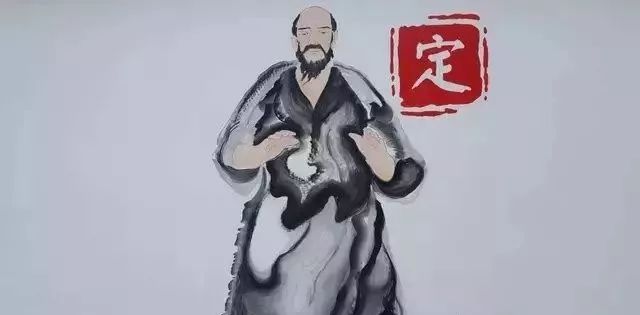
The Basic Practice Methods of Tai Chi
1. Basic Standing Posture Exercises [Code and Guiding Style]
1. Health-preserving standing posture: Feet open [three-dimensional balance support, connecting the three joints of the back, connecting the Ren and Du meridians]
2. Breathing methods: (Upper body) lift and inhale – sink and exhale, (Lower limbs) lower and inhale – rise and exhale, bend and inhale – stretch and exhale, contract and inhale – open and exhale, store energy and inhale – release energy and exhale, step and inhale – land and exhale, etc.
3. Scapular movements: Elevate – sink – retract – expand, practice and experience these four types. Use the sinking and expanding to keep the back open (pulling the back) to facilitate the transmission of waist and leg power to the upper limbs.
4. Wuji Style – Tai Chi Style: Wuji represents chaos before differentiation, while Tai Chi represents the initial separation of heaven and earth, where the light and pure rise to the heavens, and the heavy and turbid sink to the earth. Taking this meaning, perform rising and lowering (waist and legs pushing and extending – sinking and bending) – lifting and pressing (arms lifting – pressing down).
5. Embracing the Ball Posture (Hunyuan Zhuang) – experience the five bow shapes [body bow (referring to the trunk and head), arm bows (two), leg bows (two)].
6. Pressing Hands Posture (downward, forward) – Bowing Method [General Bow: Shoulders bear the horizontal bow, waist and legs push and extend, hands grasp the bowstring and press down. Body Bow: Spine stands upright like a bow, waist and back pull and lean back, both hands push forward with combined force].
7. Combat Posture: Stand in Ding Ba Bu (Three Body Posture or Three Seven Posture), practicing methods 1-6.
8. Auxiliary Strengthening Methods:
①: Sucking in the hips, contracting the buttocks: experience the movement of the pelvis and spine’s forward and backward bending, feeling the sensation of suspending the crotch. Become proficient in the movement of the large muscle groups in the waist and hips.
②: Shaking the head and tail: experience the lateral bending movement of the pelvis and spine.
③: Hip Circles: experience the circular movement of the pelvis. Become proficient in the precise control of the movement posture of the waist and hips.
④: Shaking the hips: experience the forward and backward swinging movement of the pelvis.
2. Basic Patterns of Practical Techniques
1. Screw Hand Capture: The arm has only two forms of external rotation and internal rotation. External rotation key points: scapula pushes the arm into internal rotation – extend the hand, body pulls the arm into external rotation – retract the hand.
Internal rotation key points: scapula pushes the arm into external rotation – extend the hand, body pulls the arm into internal rotation – retract the hand.
2. Tai Chi Circles: There are only two forms of external and internal circles. External circles: external cutting hand style, cloud hands style, elbow external cutting style. Internal circles: internal cutting hand style, cat washing face style, elbow internal cutting style.
3. Silk Reeling Hand: There are external and internal silk reeling.
External silk reeling: small silk reeling hand (wrist ulnar cut), elbow silk reeling, large silk reeling hand (single whip style).
Internal silk reeling: small silk reeling hand (wrist radial cut), elbow silk reeling, large silk reeling hand.
3. Practical Technique Application Patterns
1. Large Wrapping Posture: Half horse stance transforms into half bow stance. Arm and hand coordination has a tearing and twisting style. The tearing and twisting style means that both hands generate tearing force while simultaneously twisting the waist.
2. Long Waist Large Wrapping: Tearing and twisting style and pulling aside style. The pulling aside style means one hand pulls back while twisting the waist to generate pulling force, and the other hand pushes back.
3. Leg Embrace Independent Style: One leg embraces the enemy’s leg, performing a collapse (upward) – twist (rotation).
4. Capture and Pull Hand Style: Similar to a brushing action.
5. Embrace Collapse Style: Both hands embrace the enemy’s waist, performing a collapse (upward force).
6. Back Collapse Style: Half horse stance pushes and extends – folding the arms – lowering the head – pulling and scraping underfoot.
7. Push and Charge Style: Holding a small stick in front of the chest, performing horse stance push and charge, large wrapping posture push and charge, long waist large wrapping push and charge.
4. Basic Power of Tai Chi
1. Basic Power: Generated by flexing the hips and knees – extending the hips and knees, with the waist and hips (Dantian) as the center, transmitting power upward to the upper body and arms, and downward through the calves to the ground, ultimately forming a supporting reactive force.
2. Yin-Yang Power: Inward is Yin, outward is Yang; slow is Yin, fast is Yang; soft is Yin, hard is Yang; horizontal is Yin, vertical is Yang; round is Yin, square (straight) is Yang, etc.
3. Three Axes Power: Vertical axis screw, horizontal axis wrapping, sagittal axis rotation.
4. Four Main Forces: Press (horizontal), Pull (towards me), Push (against the enemy), and Twist (against the enemy).
5. Four Corner Forces: Capture (outward), Pull (inward), Elbow (diagonal strike), Lean (diagonal lean).
6. Four Foot Forces: Collapse (upward push), Pull (towards me), Tear (relative tearing), Charge (against the enemy).
7. Five Element Forces: Chop (from above downward, taking the meaning of chopping), Collapse (straight forward, taking the meaning of wood growing straight), Horizontal (sideways like a slant, taking the meaning of earth blocking water), Drill (rotating and drilling out, taking the meaning of water flowing in curves), Cannon (from below upward, taking the meaning of fire rising).
8. Straight Punch: An improvement of the straight punch in Sanda, where the fist shape is fully extended and retracted, using explosive power in the overall exertion method (extending the hips and pushing the legs – shaking the hips), utilizing the external abduction of the scapula to transmit force to the arm and fist. Bruce Lee’s vertical punch is similar to this.
9. Swing Punch, Hook Punch: Similar to the above method, but with the addition of inward rotation of the same side leg, waist, and shoulder.
10. Whip Hand, Whip Punch: Similar to the above method, but with the addition of outward rotation of the same side leg, waist, and shoulder.
11. Smash Punch: Similar to the above method, but with the addition of inward and forward rotation of the same side leg, waist, and shoulder, with the arm smashing down from above.
The above are some basic powers of martial arts, including overall power, capture power, wrestling basic power, and basic technique power of punching, etc. Once this foundation is solid, the techniques of kicking power will naturally follow.
Note: Some articles, images, and videos in this public account are sourced from the internet, and the copyright belongs to the original authors. If there are any copyright issues, please contact us to modify or delete related articles.
Recommended Reading: Using Tai Chi and Standing Meditation to Overcome the Several Hurdles and Taboo in a Hundred Days of Foundation Building
